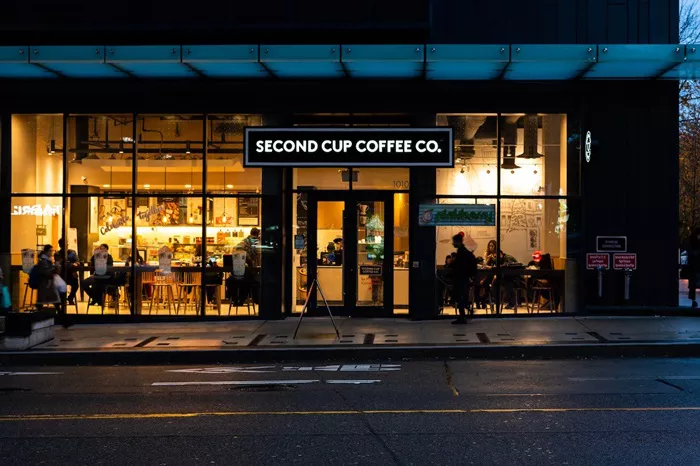Coffee shops are popular businesses worldwide. Many people dream of opening their own cafe. But is it really profitable? The answer depends on many factors.
Understanding Coffee Shop Costs
Startup Costs
Opening a coffee shop requires significant initial investment. Typical startup costs include:
- Location rental deposit – Usually 3-6 months rent upfront
- Equipment – Espresso machines (5,000−20,000), grinders, brewers, refrigerators
- Renovations – Plumbing, electrical, decor (20,000−100,000)
- Initial inventory – Coffee beans, milk, syrups, food items
- Licenses and permits – Health department, business license
- Marketing – Signage, website, initial promotions
Total startup costs typically range from 80,000to300,000 depending on location and size.
Ongoing Operational Costs
Monthly expenses include:
- Rent – Usually 6-12% of sales in prime locations
- Labor – Baristas, managers (25-35% of sales)
- Coffee beans – 10−15 per pound (specialty grade)
- Other ingredients – Milk, sweeteners, food items
- Utilities – Electricity, water, gas, internet
- Loan payments – If you borrowed startup money
- Marketing – Ongoing promotions and advertising
- Maintenance – Equipment repairs, cleaning supplies
Coffee Shop Revenue Streams
Successful coffee shops make money from multiple sources:
Beverage Sales
Coffee drinks generate the highest profit margins:
- Drip coffee: 75-85% margin
- Espresso drinks: 65-75% margin
- Specialty drinks: 60-70% margin
The average customer spends 3−5 per visit on beverages.
Food Items
Adding food increases revenue:
- Pastries: 70-80% margin
- Sandwiches: 60-70% margin
- Breakfast items: 55-65% margin
Food typically accounts for 20-30% of total sales.
Retail Products
Selling coffee beans and merchandise:
- Whole bean coffee: 50-60% margin
- Mugs and equipment: 40-50% margin
Specialty Services
Additional revenue sources:
- Coffee brewing classes
- Private tastings
- Catering services
- Subscription services
Typical Profit Margins
Well-run coffee shops average:
- Gross profit margin: 60-70%
- Net profit margin: 10-15%
This means for every $100 in sales:
- 60−70 covers ingredients and direct costs
- 30−40 covers overhead and labor
- 10−15 is net profit
Annual profits typically range from 50,000to150,000 for independent shops. Franchises may earn more.
Factors Affecting Profitability
Location
The factor determining success:
- High foot traffic areas perform best
- Near offices, universities, or busy streets
- Visibility and accessibility matter
Rent should be 6-12% of projected sales.
Coffee Quality
Specialty coffee shops can charge premium prices:
- Single-origin beans command higher prices
- Skilled baristas create better drinks
- Proper equipment ensures quality
Operational Efficiency
Streamlined operations save money:
- Optimal staff scheduling
- Inventory management
- Waste reduction
- Energy efficiency
Customer Experience
Happy customers return and spend more:
- Friendly service
- Comfortable atmosphere
- Consistent quality
- Loyalty programs
Common Mistakes That Reduce Profits
Many coffee shops fail due to:
- Poor location selection – Not enough customers
- Underestimating costs – Running out of money
- Overstaffing – Labor costs too high
- Waste – Poor inventory management
- Inconsistent quality – Losing customers
- Weak marketing – Not attracting new business
- Bad pricing – Either too high or too low
How to Maximize Coffee Shop Profits
Follow these proven strategies:
- Control food costs – Keep at 25-35% of food sales
- Optimize labor – 25-35% of total sales
- Increase average ticket – Upsell food items
- Reduce waste – Track inventory carefully
- Build loyalty – Reward regular customers
- Offer seasonal specials – Drive repeat visits
- Expand revenue streams – Catering, classes, etc.
Real-World Profit Examples
Independent Urban Cafe
- Location: Downtown area
- Size: 1,200 sq ft
- Weekly sales: $8,000
- Annual revenue: $400,000
- Net profit: $60,000 (15%)
Suburban Drive-Thru
- Location: Shopping center
- Size: 800 sq ft
- Weekly sales: $6,500
- Annual revenue: $325,000
- Net profit: $48,000 (15%)
Specialty Coffee Bar
- Location: University area
- Size: 900 sq ft
- Weekly sales: $10,000
- Annual revenue: $500,000
- Net profit: $100,000 (20%)
Is a Coffee Shop Right for You?
Consider these questions:
- Do you have sufficient startup capital?
- Are you prepared to work long hours?
- Do you understand coffee quality?
- Can you handle the stress of business ownership?
- Is there market demand in your area?
If you answered yes, a coffee shop could be profitable for you.
Conclusion
Coffee shops can be profitable with proper planning and execution. Typical net profits range from 10-20% of sales. Success depends on location, quality, operations, and customer service. By controlling costs, maximizing revenue streams, and avoiding common mistakes, your coffee shop can achieve healthy profitability. The key is balancing excellent coffee with smart business practices.


